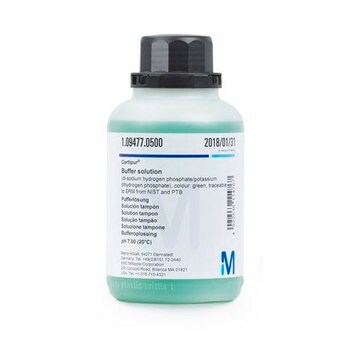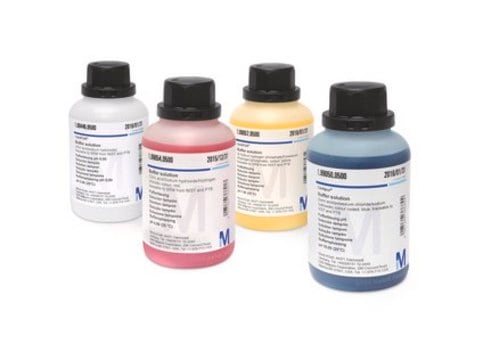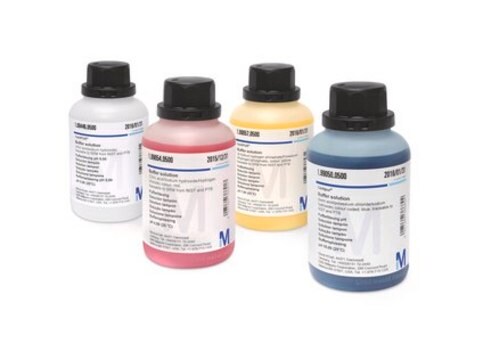1.07294
Buffer solution
di-sodium hydrogen phosphate/potassium dihydrogen phosphate, traceable to NIST, traceable to PTB, pH 6.88 (20 °C), Certipur®
Synonyme(s) :
di-sodium hydrogen phosphate/potassium dihydrogen phosphate buffer, pH 6.88 calibration standard solution
About This Item
Produits recommandés
Qualité
certified reference material
Niveau de qualité
Agence
traceable to NIST
traceable to PTB
Gamme de produits
Certipur®
Composition
di-sodium hydrogen phosphate/potassium dihydrogen phosphate
pH
6.88 (20 °C)
Application(s)
environmental
food and beverages
general analytical
industrial qc
pharmaceutical
Format
mixture
Température de stockage
15-25°C
Description générale
The ready-to-use Certipur® buffer solutions are prepared gravimetrically in our ISO/IEC 17025 accredited calibration laboratory from high-purity salts, acids and bases diluted in high-purity water. All balances are regularly calibrated with analytical weight sets traceable to primary standard reference materials from NIST and PTB. The pH-value is measured to the highest precision using a combined glass electrode after 5-point calibration (according to DIN 19268) against reference buffer solutions (according to DIN 19266, IUPAC, NIST, Ph.Eur. and USP).
Download your certificate at http://www.sigma-aldrich.com to view certified values, including uncertainty and expiry date.
Caractéristiques et avantages
- Compliant: Produced according to EP and USP guidelines
- Secure: Tested in our ISO 17025 accredited calibration laboratory
- Ready for audits: Detailed certificate of analysis for every product
- Convenient: Simply open the pack for quick, accurate pH calibration
Informations légales
En option
Code de la classe de stockage
12 - Non Combustible Liquids
Classe de danger pour l'eau (WGK)
nwg
Point d'éclair (°F)
Not applicable
Point d'éclair (°C)
Not applicable
Certificats d'analyse (COA)
Recherchez un Certificats d'analyse (COA) en saisissant le numéro de lot du produit. Les numéros de lot figurent sur l'étiquette du produit après les mots "Lot" ou "Batch".
Déjà en possession de ce produit ?
Retrouvez la documentation relative aux produits que vous avez récemment achetés dans la Bibliothèque de documents.
Les clients ont également consulté
Notre équipe de scientifiques dispose d'une expérience dans tous les secteurs de la recherche, notamment en sciences de la vie, science des matériaux, synthèse chimique, chromatographie, analyse et dans de nombreux autres domaines..
Contacter notre Service technique











